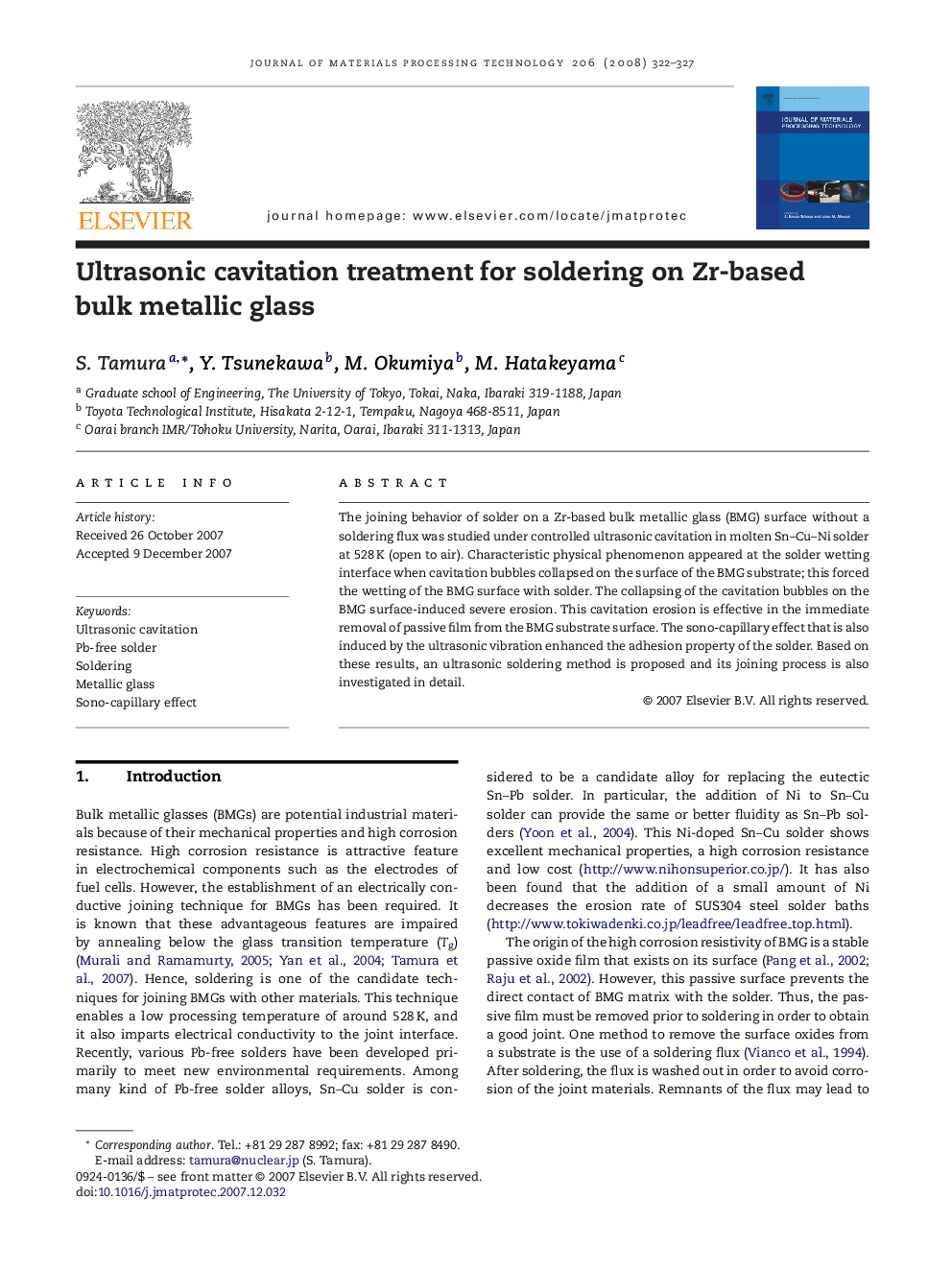| Article ID | Journal | Published Year | Pages | File Type |
|---|---|---|---|---|
| 791675 | Journal of Materials Processing Technology | 2008 | 6 Pages |
The joining behavior of solder on a Zr-based bulk metallic glass (BMG) surface without a soldering flux was studied under controlled ultrasonic cavitation in molten Sn–Cu–Ni solder at 528 K (open to air). Characteristic physical phenomenon appeared at the solder wetting interface when cavitation bubbles collapsed on the surface of the BMG substrate; this forced the wetting of the BMG surface with solder. The collapsing of the cavitation bubbles on the BMG surface-induced severe erosion. This cavitation erosion is effective in the immediate removal of passive film from the BMG substrate surface. The sono-capillary effect that is also induced by the ultrasonic vibration enhanced the adhesion property of the solder. Based on these results, an ultrasonic soldering method is proposed and its joining process is also investigated in detail.
